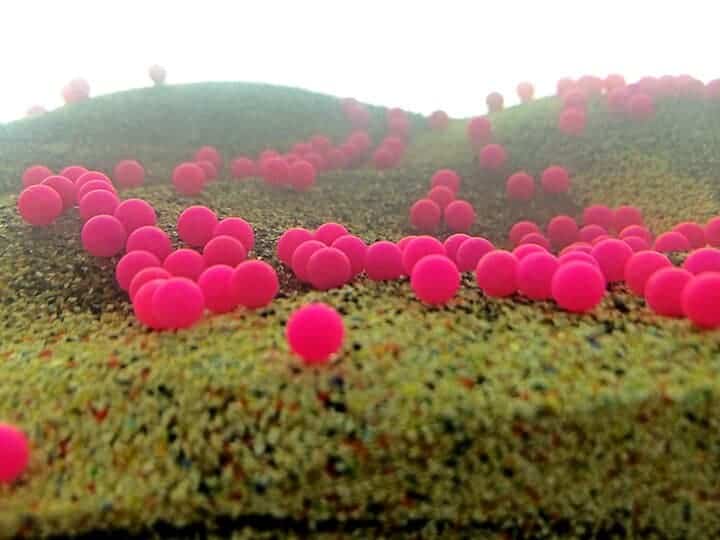Laboratory experiments in flowing water using synthetic surrogate Silver Carp eggs demonstrate egg suspension at lower velocities than previously thought, according to a new U.S. Geological Survey study. The drift of synthetic eggs at a range of flows was evaluated to provide insight into both suspension of water-hardened Silver Carp eggs and the potential interaction of eggs with the bottom of a river.
Since Asian carp eggs must stay suspended in rivers to survive to hatching, it is important to understand what flows cause them to settle to the bottom. These critical flow conditions help scientists to determine which rivers may be suitable for Asian carp reproduction. Results are published in the journal PLOS ONE.
Scientists with University of Illinois and the USGS recently studied the suspension, transport and settling of Silver Carp eggs using synthetic surrogates at the Ven Te Chow Hydrosystems Laboratory, University of Illinois at Urbana-Champaign. The researchers found that 65 percent of the eggs were in suspension at mean velocities as low as 0.07 meters per second, considerably lower than previously thought (0.15 to 0.9 meters per second). If eggs are staying in suspension at these small velocities, then survival rates would be higher than previously expected in low flow systems. In addition, dimensionless ratios between turbulence and egg sinking rate were calculated for different flow conditions. These ratios can be used for first order assessment of egg suspension together with observed egg suspension mode from laboratory experiments. Results provide more information on egg suspension (i.e., 50 percent of eggs in suspension) than a mean velocity threshold.
Tatiana Garcia, USGS research hydrologist and lead author of the paper, performed experiments in moving water in a temperature-controlled re-circulatory flume with a sediment bed. Styrene beads were used as synthetic surrogate eggs to mimic the physical properties of water-hardened Silver Carp eggs. Egg suspension and drifting behavior of synthetic eggs was evaluated under different flow conditions and bed configurations.


